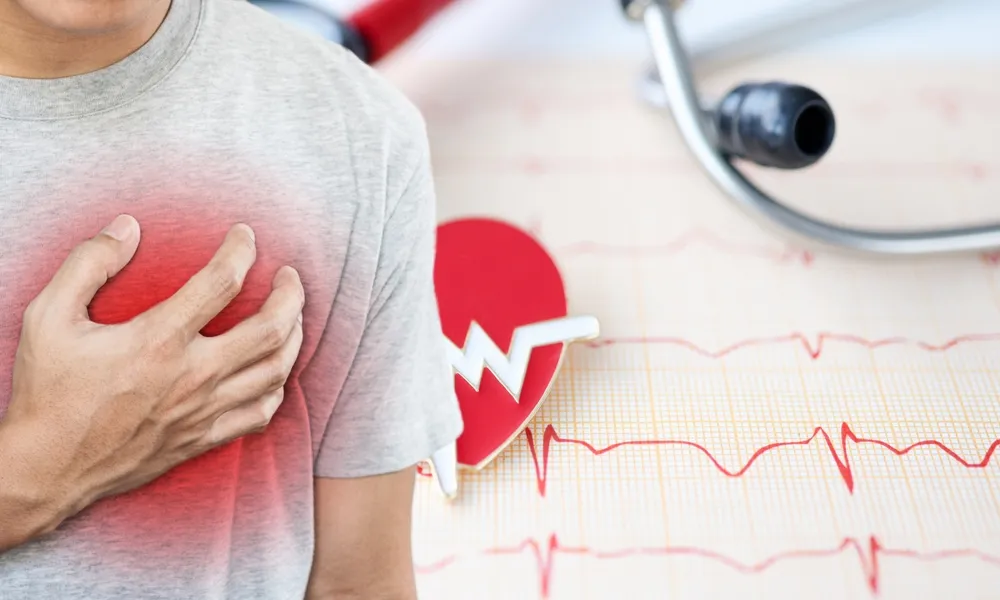
Understanding the key differences between heart attacks and strokes is crucial for early intervention and better outcomes. While both conditions involve disruptions in blood flow, they affect different body parts—heart attacks impact the heart, while strokes affect the brain.
This blog will compare the symptoms, causes, and treatments of strokes and heart attacks to help you identify them quickly and seek prompt medical attention.
Key Differences: Stroke vs. Heart Attack
A stroke occurs when there is a sudden interruption in the brain’s blood supply, either due to a blockage or a rupture in a blood vessel. Ischemic strokes, the most common type, result from a blood clot obstructing a vessel, while hemorrhagic strokes occur when a weakened blood vessel bursts, causing bleeding in the brain. Both types can lead to significant brain cell damage and loss of function in the affected area.
On the other hand, a heart attack is caused by a blockage in the arteries that supply blood to the heart. This heart artery blockage, often due to plaque buildup, prevents oxygen-rich blood from reaching the heart muscle, leading to damage or death of the tissue.
Recognising early signs of these conditions is critical, as prompt treatment can improve outcomes and reduce long-term damage.
Symptoms: How a Stroke and Heart Attack Differ
Stroke Symptoms
Remember acronym “FAST” for easy recollection. FAST is for following as outlined below
- F – Face: Ask the person to smile. Does one side of the face droop or appear numb?
- A – Arms: Ask the person to raise both arms. Does one arm drift downward or appear weak?
- S – Speech: Is the person’s speech slurred, difficult to understand, or repeated?
- T – Time: Call 995 (or your local emergency number) immediately if you notice any of these signs. Time is critical in stroke treatment.
- Other symptoms to look for
- Sudden numbness or weakness, particularly on one side of the body.
- Sudden loss of vision, particularly in one eye.
- Confusion, dizziness, or trouble walking.
Heart Attack Symptoms
- Chest pain or discomfort may feel like pressure, squeezing, or fullness.
- Shortness of breath, even when resting.
- Nausea, lightheadedness, or dizziness.
- Pain in the back, jaw, neck, or stomach, sometimes spreading to the shoulders and arms.
- Some individuals, especially women, diabetics, and older adults, may experience atypical symptoms such as unusual fatigue, nausea, or no chest pain at all.
Causes of Stroke vs. Heart Attack
Stroke Causes
- A blood clot blocks blood flow to the brain.
- A rupture of a blood vessel in the brain leads to a haemorrhagic stroke.
Heart Attack Causes
- A blockage in the coronary arteries is often caused by plaque buildup, which can result from high cholesterol, smoking, poor diet, and other factors. Conditions such as hypertension and diabetes increase the risk by damaging blood vessels and promoting atherosclerosis.
- The risk factors for both stroke and heart attack are similar and include high blood pressure, high cholesterol, smoking, diabetes, and a lack of physical activity.
Diagnosis: How Doctors Identify a Stroke or Heart Attack
Stroke Diagnosis
- CT scans or MRIs to detect brain damage.
- Physical exams to check neurological function.
Heart Attack Diagnosis
- An electrocardiogram (ECG) to measure the heart’s electrical activity.
- Blood tests to detect markers of heart muscle damage.
- Angiography to examine blood flow in the coronary arteries.
A quick diagnosis ensures that appropriate treatments are initiated as soon as possible.
Treatment Options for Stroke vs. Heart Attack
Stroke Treatments
- For ischemic strokes, clot-busting medications like tPA (tissue plasminogen activator) may help dissolve clots in eligible patients
- Surgery to remove clots or repair ruptured blood vessels.
- Rehabilitation to regain lost functions such as movement, speech, or cognition.
Heart Attack Treatments
- Emergency medications to dissolve clots, reduce pain or dilate blood vessels.
- Angioplasty to open blocked arteries or bypass surgery to reroute blood flow.
- Long-term lifestyle changes, including a healthier diet, increased physical activity, and possibly medications to prevent further blockages.
For both conditions, prompt treatment can reduce the damage and improve the chances of recovery.
Prevention: How to Protect Yourself from Both Stroke and Heart Attack
Preventing heart attacks and strokes can help you protect your health. The following preventive measures are key:
- Maintaining a healthy diet rich in fruits, vegetables, and whole grains, and moderation in other foods.
- Regular physical activity, such as walking, swimming, or cycling.
- Quitting smoking significantly reduces the risk of cardiovascular disease, including plaque buildup in the arteries.
- Managing stress through relaxation techniques, like meditation or yoga.
- Having regular checkups with your doctor.
Recovery and Rehabilitation After a Stroke or Heart Attack
Stroke Recovery
Recovery after a stroke can involve a combination of physical therapy, speech therapy, and occupational therapy to regain lost abilities and improve daily functioning. This is done under supervision of your specialists.
Heart Attack Recovery
After a heart attack, rehabilitation often involves cardiac rehabilitation, lifestyle changes like diet and exercise, and medications to prevent further complications.
Both recovery processes require a long-term commitment to maintaining healthy habits and monitoring health to avoid complications.
Gerard Leong Cardiology Clinic – Receive Care for Stroke and Heart Attack Prevention
In conclusion, understanding the differences between strokes and heart attacks is essential for recognising symptoms early and seeking immediate care. The earlier the intervention, the better the chances of recovery and prevention of long-term damage.
At Gerard Leong Cardiology Clinic, we offer care and consultation for stroke and heart attack prevention. Our team offers comprehensive services to manage and reduce the risk of these life-threatening conditions, helping you maintain a healthy heart and brain. Reach out to us today for personalised care and advice.
Sources:
